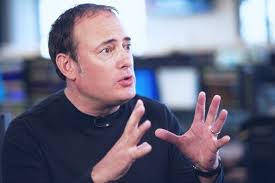How Steve Perlman's pCell can transform India - and the world - with superfast wireless


If smartphones keep selling the way they do in India (and other developing countries) bumping up penetration rates from India’s 18 percent to China’s 80 percent (which has a gargantuan 650 million smartphone users at last count), it could get pretty crazy.
Or crazily frustrating, considering current 3G speeds in India are a joke and videos constantly experience judders and lags. This is only going to get much worse as many more mobile users start to exchange heavy video files.
Very soon, net traffic on the net will resemble what Mumbai in peak traffic is like even today—seriously gridlocked and often a wait of up to forty minutes at certain major traffic lights (like Haji Ali) in the city.
Given these dreary realities, what would you think if I told you that your average mobile download speed could be 1,000 times faster tomorrow?
When John Sculley, former CEO of Apple (whom I have written about here) was in India recently to promote his line of low-cost smartphones aimed at developing countries, he talked about Steve Perlman and his company pCell with whom he is associated with, who could transform the world of global telecommunications. One of its major impacts could be on countries like India that are just beginning their data-consuming journey.
Perlman is most famous for selling his company WebTV to Microsoft. However, his latest innovation which he says he has been working on for the last ten years could make WebTV look like a high-school science project if pCell turns out to be successful.
The problem that his company pCell began to tackle years ago was one that haunts us today on a regular basis when cell tower signals radiate radio waves that bleed into each other causing familiar (at least in India) exasperations such as call drops and weak signals.
pCell’s technology apparently creates a complex algorithm that produces a unique signal for each cellphone, thereby allowing each person to access pretty much its full capacity rather than a fraction of that which a cell tower emanates, which is what you and I consume today.
pCell’s multiple small antennas provide "a bubble of a signal that goes wherever the phone goes," without requiring the user to share bandwidth. It is being talked about as a successor to LTE, and offers nothing short of blazing speed.
This means that you can watch a 4K version of a TV program on your large screen Smart TV that is hooked up to the Internet without so much as a stutter. "We believe this is the largest increase in capacity in the history of wireless technology," says Perlman in the Wired article. "It’s like the wireless equivalent of fiber-optic cables."
Is this for real?
Recently, Perlman demonstrated this technology in front of a diverse array of observers—journalists and business luminaries—at Columbia University where he exhibited 8 iPhones that shared just 5 MHz of spectrum but were able to stream HD video seamlessly. In another demo, he played multiple streams of Netflix’s House of Cards in 4K using just 10 MHz of spectrum.
Of course, for this to happen pCell would have to roll out a large number of these small antennas that would require a sizable sum of money—something that is the last thing that debt-laden broadcasters who have already shelled out a pretty penny for existing networks would want to do.
In places like India, the telecom landscape keeps throwing up new challenges, opportunities and contenders. Telcos here just spent a packet bidding for more spectrum while Mukesh Ambani’s Jio waded into the space last year and almost overnight has become the biggest threat to market leader Airtel in nationwide 4G services.
Still, all it could take is a telecom upstart with a pocketful of cash to bet on Perlman’s pCell, throw things into a tumult and foment a technology revolution that the world is waiting.